When: In previous views like this we've looked at the ships in the harbour or the buildings in the foreground to pin down the photo's date. As this is a very sharp photo I'm going to look across the harbour to the Hung Hom peninsula for clues instead.
For most of the 20th century the peninsula was an industrial area, home to a cement works, a power station, and a large dockyard. The cement works and power station are mostly out of sight on the far side of the hill, but the Kowloon Docks are facing us and are clear to see.
This curious tower at the end of the docks, a stubby "T" shape, is our first clue to the photo's date.
The short arms are a sign that it was still under construction. When it is finished it will look like this:
It was the dockyard's hammerhead crane, capable of lifting loads up to 100 tons in weight. Kowloon Docks had bought it second-hand from a shipyard on the Humber in northeast England that had closed down. The crane was dismantled, then shipped here to Hung Hom where it was rebuilt.
The newspaper report of Kowloon Docks' annual meeting in March 1937 noted that the foundations for the crane were complete, and it was hoped that the crane would be finished by the end of the year. At next year's meeting in March 1938, they confirmed that the crane was complete and had passed its tests. The main photo must have been taken some time between those two dates.
The dockyard also has a second clue for us. Can you spot what's wrong with this picture?
That looks like a strange angle for a ship to be in the water. It reminded me of post-typhoon scenes, which led me to this photo of the same ship:
On September 1 & 2, 1937, a terrible typhoon hit Hong Kong. One of the victims was the SS Talamba, driven on to the rocks below Devil's Peak. It stayed there for almost three months, until it was successfully re-floated on 21 Nov 1937, and taken to be moored at a buoy off the Kowloon Docks.
That narrows the range down to between November 1937 and March 1938. As the crane still needs more work before it is finished I'll pick a date near that start of that range, December 1937. Corrections welcomed. [UPDATE: Several readers have applied their detective skills and narrowed down the time the photo was taken to late morning on the 27th November 1937 - see the comments below for details.]
Who: Sailors!
Panoramas like these often turn up in sailors' photo albums from the 1930s. In this case, the eBay seller said this photo came "From albums compiled by British naval officer during 1937 to 1939".
As we'll see, the photographer likely chose this scene with visiting sailors in mind.
What: This part of the harbour is marked "Man of War Anchorage" on early-20th-century maps, an area reserved for Naval ships. There would be ships anchored there that the sailor would recognise.
Furthest from the camera is a large ship with a distinctive flat deck and tower. They identify the ship as HMS Eagle, one of Britain's first aircraft carriers.
Moving closer to the photographer we have this ship.
It isn't one of the Royal Navy's ships though, as it is flying the Stars and Stripes.
The ship doesn't have any markings I can see, so let's put it on hold and come back to it in a moment. [UPDATE: The American ship has been identified as the USS Bridge - see the comments below for details.]
The closest of the three ships is clearly marked H22. It was HMS Diamond, a British destroyer.
Looking across to the right, we see two submarines.
Here's a closer look at their conning towers.
The submarine in the background is O7 [UPDATE: it's not O7, but OT for "Otus" - see comments below]. We've seen British O-class submarines in other Hong Kong photos, and know that they were frequent visitors in the 1930s.
The submarine in the foreground is a different shape and colour though. Does anyone recognise which type of submarine it is? I wonder if it might be American, and that the American ship in harbour was some kind of submarine tender ship? Hopefully some of our nautical readers will let us know more about the ship and the submarine in the comments below. [UPDATE: The submarine in the foreground has been identified as a British mine-laying submarine, one of HMSMs Grampus or Rorqual - see the comments below for details.]
Where: Just to the right of the centre is this junction.
It's a good landmark to orient ourselves - we're looking along Landale Street, then across the Y-shaped junction of Johnston and Hennessy Roads. The Chinese Methodist Church was built on the triangular plot of land at that junction. We can see its tower with the Chinese-style roof tiles at the right of the crop, and in this street-level view.
To the left of the junction are three buildings that sailors would recognise.
(A) is the China Fleet Club, and (B) is Sailors' Home and Missions to Seamen. We're more used to seeing them from the harbour, like this (the advert for San Miguel beer is on the roof of the China Fleet Club).
(C) was the Sailors' and Soldiers' Home, run by the Methodist church.
Older sailors might also remember a couple of landmarks that had recently disappeared.
(D) is the last remaining quarter of the Blue Buildings. Before the Wanchai reclamation in the 1920s, the Blue Buildings stood on the waterfront, and housed the Navy's canteen.
(E) is where a cable car terminus used to stand. The cable car ferried explosives between the shore and the Navy's magazine and laboratories that were up on the hillside near Kennedy Road. Here's how the terminus looked around 10 years earlier.
So, lots of memories for a sailor looking back at this photo in their album. If you can add any more information about the scene, please go ahead and post them in the comments below.
Regards, David
Gwulo photo ID: A574
Further reading:
The Gwulo website has pages for many of the places shown above, where you can find more information and photos:
- Hung Hom
- The dockyard, with additional pages for their hammerhead crane, No. 1 drydock, and staff housing.
- Green Island Cement Works
- Hok Un Power Station
- 1937 Typhoon (and typhoons from other years)
- Wanchai
- Cable-car to the Navy's magazine.
You'll also find lots more old Hong Kong photos and stories of their who, what, when, and where in the Gwulo series of books.

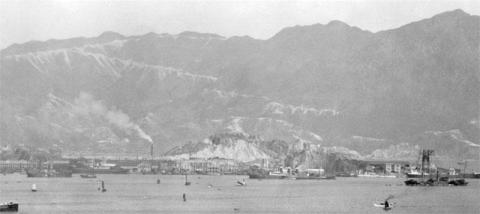
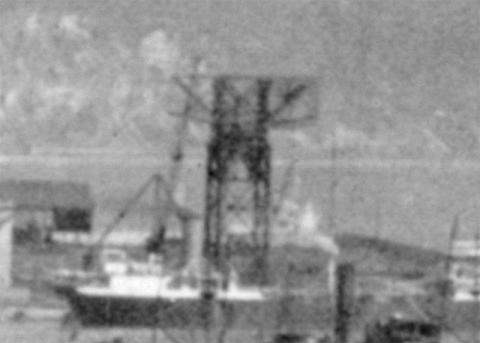

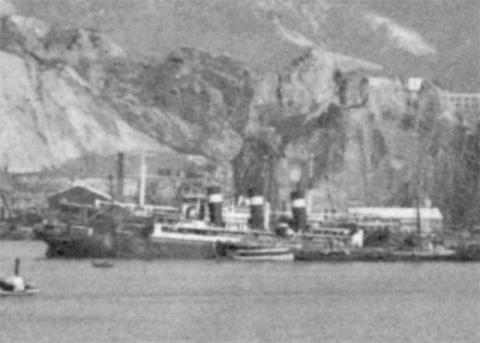



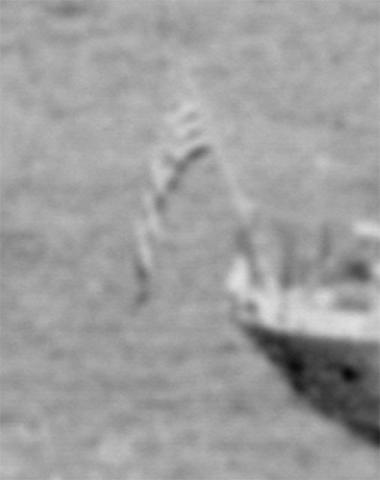


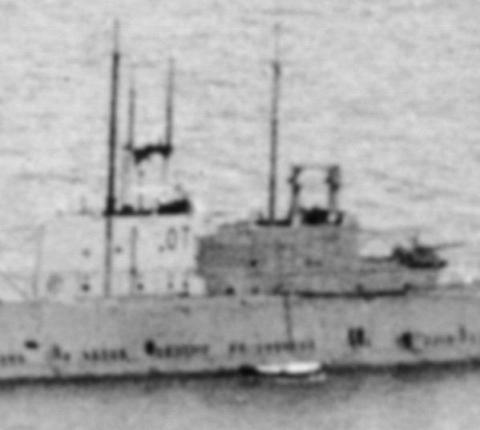
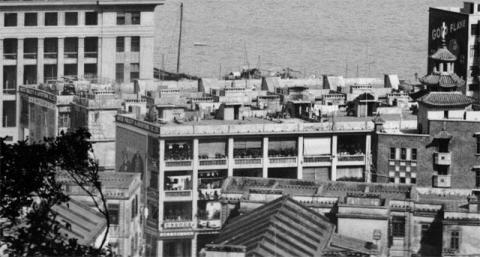
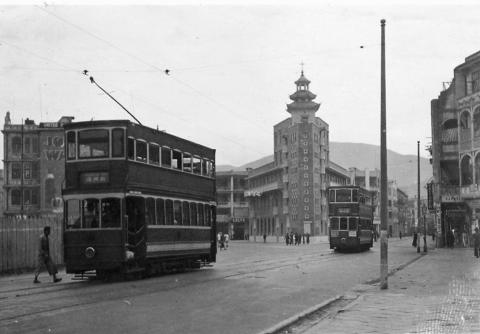

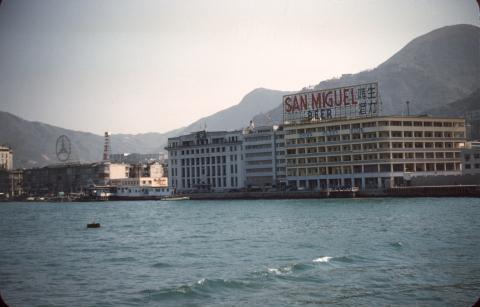


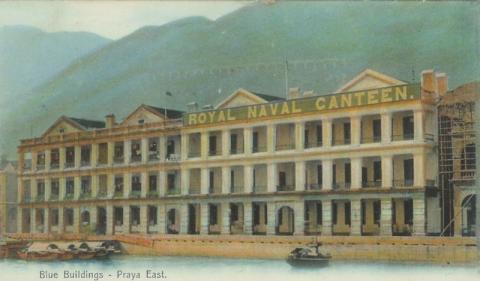
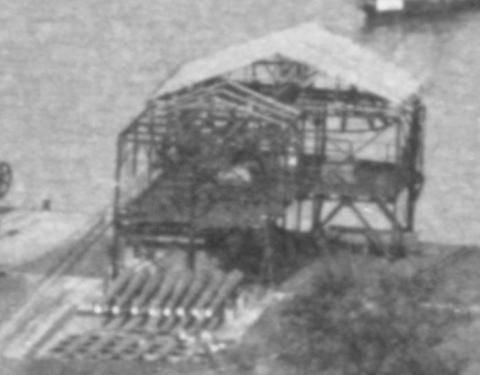

Comments
S. S. Talamba
Found a sailing of the Talamba for Calcutta on 2 January 1938. HK Daily Press 5 January 1938 refers. None for December as the vessel was being repaired.
Not sure but think the US vessel nearer to the photographer may be the USS Sacremento.
David, it’s always a pleasure
David, it’s always a pleasure and educational to read your interpretation of the photos. Here’s my attempt to narrow the date of the photo based on warship movements as gleaned from newspapers.
10th October 1937 – HMS Eagle left Taku Bar (modern day Tianjin) for Hong Kong
(Source: Hampshire Telegraph, page 14, 15th October 1937)
14th October 1937 – HMS Eagle arrived in Hong Kong
(Source: Western Morning News, page 5, 16th October 1937)
30th October 1937 – HMS Diamond arrived in Hong Kong
(Source: Western Mail, page 14, 2nd November 1937)
30th November 1937 – British naval aircraft from HMS Eagle fired on by an unidentified surface vessel during exercises today. There was no damage or injury. British naval authorities have ordered an investigation. This occurred 40 miles south-east of the Wagian Light, outside Hong Kong.
(Sources: Portsmouth Evening News, page 8, 30th November 1937
Yorkshire Evening Post, page 12, 1st December 1937)
3rd December 1937 – HMS Diamond arrived in Amoy
(Source: Western Morning News, page 9, 7th December 1937)
16th December 1937 – HMS Diamond left Amoy for Swatow
(Source: Yorkshire Post and Leeds Intelligencer, page 18, 18th December 1937)
17th December 1937 – HMS Diamond arrived in Swatow
(Source: Western Mail, page 8 21st December 1937)
20th December 1937 – Hong Kong harbour full of British warships including HMS Eagle.
(Source: Birmingham Daily Gazette, page 1, 20th December 1937)
22nd December 1937 – HMS Diamond arrived in Hong Kong
(Source: Western Mail, page 13, 24th December 1937)
8th January 1938 - HMS Eagle and HMS Diamond left Hong Kong for Singapore
(Source: Western Mail, page 13, 11th January 1938)
Conclusion: 100% certain photo is between 21st November 1937-8th January 1938
Two possible time periods for the photo:
1) Between 21st November 1937-29th November 1937
OR
2) Between 22nd December 1937-8th January 1938
Firstly, I can’t see any hint of X’mas type decorations on the buildings or ships. Secondly, the SS Talamba was still sunk in the water with the bow down as opposed to sailing by the 2nd January 1938 as per moddsey’s find.
Therefore: the photo was taken in the last week of November 1937.
1930s photo
The mystery submarine is a minelayer and, I am fairly sure, is a Grampus class boat. The two that served on the China Station were HMSMs Grampus and Rorqual. That's why her silhouette is quite unlike most submarine classes, with that flat, high sheer running all the way aft. It was needed to create the space for the mines, which rolled out through openings in the stern. She looks like she's still in home waters dark grey rather than the lighter scheme favoured on the China Station.
I have difficulty being certain of the date using the SCMP's "Warships in Port" data, which isn't always reliable. I have not successfully yet pinned down a date that seems to have either Grampus or Rorqual, the Eagle, the Diamond and a USN ship. I can't remember which of the Odins O7 was - any info gratefully received.
The US ship is not related and I suspect may be a USN destroyer tender, except that the jizz is wrong for the known culprit, the USS Melville. One way or another a fleet support vessel I think - I'll keep looking. The other possibility, though the size is wrong, would be one of the very odd looking Asiatic Squadron USN gunboats - the Sacramento was in port in late November.
StephenD
Re: Last week of November 1937
If it helps, on 22 November 1937, the Grampus was at No. 7 buoy whilst the Eagle and Diamond were at No. 2 and No. 13 buoys respectively. The USS Sacramento and USS Mindanao were also in port at the time.
1930s
Hmmm - yes I'd spotted that. The problem is that Diamond is on No.7 or possibly 13, and there's another of the same class on No.6/11 with its funnel tops and mast just visible over the China Fleet Club roof. Grampus/Rorqual and O7 are some way down the trot on what looks like around No.5. The Eagle looks like she's on No.1 with a Blue Funnel or Bank Line ship, going on the funnel colours, in ballast on B27.
Over on No.1 Wharf at the HK&KWG Co. is a big, two-funnelled liner - not sure what given the resolution on the highest zoom. Maybe one of the newish Dollar Line ships - the sister ships President Coolidge or President Hoover would fit well. The Coolidge arrived 6 November and left on 7 or 8, back on 16/17 and again 30/31 December and 8/9 Jan, then in the third week in Feb. The Hoover was due on 15 Dec but wrecked off Taiwan on the way and became a total loss.
The USN ship I have now worked out is definitely neither the Sacramento nor the Mindanao and am pretty sure it is the destroyer tender USS Black Hawk. The Black Hawk served with the US Asiatic Fleet from 1923-1940. That doubles the trouble since there are no hits at all that I can find for the Black Hawk in the Nov 1937 to March 1938 period in the SCMP, though given the search engines used by ProQuest, that is no surprise.
Stephen D
SS Talamba & friends
That 2 Jan 1938 date for Talamba's sailing helps trim down the window of possible dates. It's a surprise to see it back in use again so soon. I imagined that the odd angle meant the ship had taken on lots of water and that after three months on the rocks it would have needed a major refit, but it looks as though I got the wrong idea.
Late November is sounding like the front-runner for the photo's date. Here's a better view of the Kowloon Wharves - not great, as the edge of the photo is never the sharpest, but in case it helps:
Thanks for the introduction to HMS Grampus. I didn't know such things as mine-laying submarines existed.
I'm not sure the American ship is the Black Hawk. Looking at https://upload.wikimedia.org/wikipedia/commons/6/66/USS_Black_Hawk_%28A…, the Black Hawk appears to have a second line of portholes along the front half of the hull that aren't there on our ship. Also our ship has an extra bit of equipment at the front - not sure what the technical term is, but they look a bit like rugby posts!
Thanks for all the contributions, they make for very interesting reading.
PS I haven't found any list of O-class names & numbers either. The only numbers I can see are double-digit penant numbers prefixed with an 'N', so they aren't any help.
Following-up on Comments
Following-up on postings made here and here , the Ranchi arrived in port on 24 November and departed on 27 November 1937.
1930's view over Wanchai
The American vessel is interesting. She doesn't look like any photos of Sacramento that I've seen, but she does look remarkably like USS Savannah, later AS-8. https://en.wikipedia.org/wiki/USS_Savannah_(AS-8)
https://en.wikipedia.org/wiki/USS_Savannah_(AS-8)
However wikipedia records that she was struck from the naval register and sold for mercantile service in 1934, so perhaps Black Hawk is more likely.
Paul Money
Voyages of the Black Hawk
Voyages of the USS Black Hawk can be viewed here Difficult to place it in Hong Kong in late1937.
For those still interested in
For those still interested in identifying the US ship, here is a snippet from the Evening Star published in Washington D.C. page 5 on 14th December 1937 which lists all US warships in the Orient at that point in time. Not sure if it is helpful as it is a long list of 41 ships but a lot of the ships can be easily eliminated. It's gotta be one of these ships...?
Here is a photo of a frontal view of the USS Black Hawk in Manila circa 1937. She was there for the first four months of 1937 and later in the year from end of November. It arrived in Manila on 26th November 1937 having sailed from Shanghai on 18th November 1937 (did it pass through Hong Kong?) It does show what David called the 'rugby posts'!
https://www.ibiblio.org/hyperwar/OnlineLibrary/photos/images/i01000/i01…
If it helps - the warships in harbour 24th November 1937
Also the S.S. Ranchi was supposed to arrive in Hong Kong on 24th November 1937 at approx 4:30pm (Source: Hong Kong Daily Press, page 15, 24th November 1937) . This is about one hour from sunset. The opening photo posted by David seems pretty bright during the day so we can safely eliminate 24th November 1937 as the date of the photo. Also note the thick black smoke coming out from the funnel of S.S. Ranchi....is she about to depart? This suggest the photo may have been taken on 27th November 1937.
1937 Christmas Period
For USS vessels in Hong Kong during the second period mentioned above, only the USS Asheville was in port between 24-27 December. Although the Eagle and Diamond were present, the Ranchi was not in port. Only the Ranpura between 23 and 25 December.
1930s photo
There is a number of problems with the "Warships in Port" cutting. The main one is that in David's photo the Eagle does not appear to be on buoy No.2 but Buoy No.1. Buoy No.2 is visible and empty. Cumberland (or any other major warship) might be on No.3 which is out of shot to the left. Diamond on No.13 looks OK and the second destroyer could be Thracian - the visible bits more or less fit. Grampus, however, is in the list on the North Arm and not, as in the photo, out on a buoy (assuming the sub is Grampus and not Rorqual). And neither Sacramento nor Mindanao conforms with the US Navy vessel we can see.
The Ranchi fits beautifully (thank you for the zoom, David), though so might the Ranpura (a sister ship along with the Rawalpindi and Rajputana) - but here's a lovely shot of the Ranchi in Shanghai in 1937 (https://www.hpcbristol.net/visual/ro-n0432), which allows us to be pretty certain (few 'class' ships were actually identical).
The rugby posts - formally a kingpost pair (there's a code for this stuff and this ship would be coded KM-M-F-M meaning: a paired kingpost (i.e. the kingposts are side by side (but don't have to be joined across the top), a mast, the funnel, and a second mast - it was a very useful ship recognition system used in WW2 but building on a pre-war system first introduced in Lloyd's Register but much developed in the 1930s into the recognition books that were a key standby on bridges for ship recognition (see https://maritime.org/doc/id/index.htm)) may not be definitive. One has to remember that naval vessels are often quite long-lived (Black Hawk 1913-1946) and went through a fair number of transformations during their service lives. Still, you are correct that in almost all photos her code is M-M-F-M and there is no KM to be seen (best run of images at http://www.navsource.org/archives/09/03/0309.htm.
However, we can forget ideas of the Black Hawk, a straw grasped in desperation since, thanks to Eurasian_David for the list, I have come up with a fairly solid identification of the USS Bridge (KM-M-M-F-M) have a look at http://www.navsource.org/archives/09/06/0601.htm), though I can't find a single hit suggesting when she might have been in HK. Her kingpost pair is not joined across the top but the profile pretty much fits. Not being able to spot (side)scuttles (technically one should not call them portholes - SOLAS doesn't (though of course the world's 99.999999% of lubbers does)) with images at this resolution is normal especially given that in harbour in tropical climates, scuttles were often fitted with inserted windscoops, which means no nice round black hole.
Doesn't get any closer to a confirmed date, sadly, but perhaps a bit more usable data and a jolly class in ship recognition - a vanishing art.
StephenD
1937 Christmas Period
Is the P&O liner at the Kowloon wharves the RANCHI or the RANPURA?
The RANCHI and RANPURA were sister ships built by Hawthorn Leslie. There are photos on flickr of a superb model representing both ships on display in the Discovery Museum Newcastle. The two rectangular windows below the bridge wing, seen in the photos of the RANCHI, are part of the model. The photographer’s description says the ships were identical.
https://www.flickr.com/photos/a_responsibility_to_awe/14989431146/in/photo/
However, an official P&O postcard clearly shows the RANPURA with 3 round port holes instead.
https://www.flickr.com/photos/adambangor/5347786542
This feature is also present in a photo of the RANPURA currently posted on Ebay.
https://www.ebay.co.uk/itm/pf0747-P-O-Liner-Ranpura-built-1925-photograph-/362172366628
It is possible at some stage that the RANPURA ‘s three portholes were replaced with two windows. I can’t find any photos to show this alteration yet.
Intriguing!
degahkg
Thanks for all the extra
Thanks for all the extra investigations. The dates for Ranchi look good.
USS Bridge is a good match. I found a couple of mentions that she was in this part of the world at the right time:
USS Bridge
So, here’s the gold, buried on p.19 of the SCMP for 27-11-1937, which for some reason best known to the editor, didn’t have one of the aleatory ‘Warships in Port’ pieces:
WARSHIPS MOVEMENTS
The U.S.S. Bridge arrived here yesterday while the U.S.S. Gold Star Is now expected on Sunday. H.M.S. Dainty left for Shanghai on Thursday.
I think that wraps things up for 26 or 27 November.
StephenD
cable car terminus
Brilliant close-up of the cable car terminus with what look like 15 gun barrels (look to me like old 6") lined up below.
That actually MAY help resolve a little issue I stumbled into doing work on the four gun barrels dug up when the old G Block in Victoria Barracks was being jazzed up for the Asia Society's conversion of the old Ammunition Magazine that the cable car served. One of the barrels dug up was one of the many 6" that were withdrawn from service in the early part of the 20th century. I always wondered whether the barrels (the others went back to the late 18th century!) had travelled up via the cable system (which had a fork in it allowing the guns to pass quite close to G Block). Maybe this shows that they could have done.
The cable system was still around in the early 1950s wasn't it?
StephenD
The date of the arrival of
The date of the arrival of USS Bridge on the 26th November 1937 by StephenD is a great find.
If degahkg is happy the ship is SS Ranchi we might as well put a time stamp on the photo.
S.S. Ranchi
Arrived Hong Kong (from Yokohama via Kobe) at approx. 4:30 pm 24th November 1937
Moored at Kowloon Docks at buoy No. A1
Departed Hong Kong 27th November 1937 for Europe shortly after 10:30 am (15 mins before 10:30am was the final closing advertised time for outward ordinary mail to be posted for the ship concerned)
Sources:
1) Hong Kong Daily Press Page 15 27th November 1937
2) Hong Kong Daily Press Page 16 27th November 1937
If smoke is belching out of its funnels, the boilers are in action and the ship is readying to go, rather than sitting idly at dock. Combining the angle of the shadows from the near buildings in the photo and the known approximate departure time of the ship, the photo was likely to have been snapped late morning sometime before noon on 27th November 1937.
Ranchi
With luck not buoy A1, because that's not where what we think to be the Ranchi is in the photo.
So, back to checking the fine print. Answer is that the vessel in the photo is NOT the Ranchi but the Ranpura (how my eye deceived in seeing what I wanted it to see!).
Chapter and verse in 'Shipping Movements', SCMP, 24, 25, 26 & 27 November.
24: Ranpura due 0600 25/11 ex Singapore; Ranchi due 1600 24/11 ex Kobe
25: Ranpura due 0600 25/11 ex Singapore; Ranchi arr. 24/11 ex Kobe on mooring A1
26: Ranpura arr 25/11 ex Singapore, Kowloon Wharf; Ranchi on mooring A1
27: Ranpura cleared 26/11 for Kobe; Ranchi on mooring A1
28: no data
It follows, I think, that we must be looking at the Ranpura on Kowloon Wharf (aka No.1 Wharf) in the late morning of 26/11 a few hours before the Ranpura sailed. If David's wizardry can zoon to the FOREMAST truck (top), if the Ranpura is getting ready to leave, then flag P should be visible (the Blue Peter - no one knows why it's called that, though the name has been around since the late 18th century - there are many fanciful theories based on zip concrete evidence!). The Blue Peter was normally hoisted at 0800 on sailing day, but sometimes a bit later.
The Ranpura would appear to have sailed mid- to late afternoon, the 26.11 Post Office notices for Christmas mails (p.3 and p.22) for UK via Siberia indicated that registered mail closed at 1345 and ordinary mail at 1430. Not sure how long it took the PO to close the bags and get them across the harbour to the ship, but at a guess at least 1 hour.
Given the very short port call (looks like around 36 hours) it is vanishingly unlikely that the boilers would have been shut down, so the ship would have had at least some of her six, double-ended boilers lit throughout her call and possibly all of them. Had all the boilers been shut down and gone cold, it would have required the best part of a day to get everything burning and turning again. Getting back up to full steam pressure and warming through the twin quadruple expansion engines before departure would have meant that stuff will have started happening - so smoke from the funnels as all the boilers were brought up to pressure - one or two hours, probably longer, before the ship was expected to get underway.
Eurasian_David is right about the shadows. Using SunCalc (https://www.suncalc.org/#/22.2932,114.1673,14/1937.11.26/11:00/1/3) for 1100 on 26 Nov 1937 we can see the sun would have been at 157 degrees azimuth and 43.33 degrees altitude. It passed through the meridian (i.e. the moment at which light started to get onto west facing walls) at c.1215. The west wall of the Sailors' Home and Missions to Seamen is still in full shadow but the south wall is in full light, so the photo would seem to have been taken between 1100 and probably 1145 (sun c. 171 azimuth, 46 degrees altitude) on 26th November 1937.
That's rather delightfully precise!
Best,
StephenD
Ranchi, Ranpura and cable cars
Stephen, thanks for the further investigations. The view of the ship at the Kowloon Wharves can be zoomed in to the maximum resolution it was scanned at (https://gwulo.com/atom/35603/zoom). It was taken from the edge of the original photo though, so it isn't as sharp as the centre.
degahkg and eurasian_david, are you happy with the conclusion it's the Ranpura on the 26th?
Once we're all agreed I'll go back and add notes to the main text with all the results.
> The cable system was still around in the early 1950s wasn't it?
The photo marked 'E' above shows that in 1937 the cable car terminus had already been dismantled and removed, along with the pylons and cables as far as I can see. The photo of the terminus with the guns lined up was taken around ten years before that. There's more about it at https://gwulo.com/cable-car-over-queensway
Blue Peter
Thanks very much David - especially for clarifying the matter of the cable system and dates. U'd seen that photo Moddsey found of the 1930s Queensway that someone had obviously misdated to the early 1950s.
Thanks also for the zoom - if you look closely you can see the Blue Peter at the starboard yard arm of the foremast - so quite definitely the 26th November.
Best,
Stephen
We go where the evidence
We go where the evidence leads. I defer the ship ID skills to my esteemed colleagues so I am happy with 26th November 1937.
I looked at the weather report in the newspapers. For 10am 26th November 1937 (HKDP p16 27th November 1937), the wind direction was ENE and the wind force was Beaufort Scale 2. This is consistent with the photographic evidence – smoke from ships funnels and power station in Hung Hum (although if I was picky it was probably from ESE at the time the photo was taken but the general direction from the East is basically true). For weather reports of the 25th and 28th November, the wind was from the north (incompatible with photographic evidence). No weather report data from 27th November 1937 unfortunately unless someone else can find it.
Where the evidence leads
Taking into account the detailed evidence of shipping movements I would agree that the liner at the Kowloon wharves is the RANPURA based on the assumption that the two liners are identical.
This proviso comes from the pictorial evidence I have seen which indicates that there was a minor difference between the two vessels – namely the shape and number of the openings below the bridge wings.
Photos and the museum model clearly show the RANCHI with two rectangular scuttles/windows.
A photo on EBay and an official P&O post card show the RANPURA with three round scuttles/port holes.
https://www.ebay.co.uk/itm/pf0747-P-O-Liner-Ranpura-built-1925-photograph-/362172366628
Whilst the photo is fairly reliable evidence, the postcard evidence is inaccurate. The postcards of all four R class ships are identical depicting the same ship with three round scuttles/port holes, set in an idyllic oriental seascape – only the name is different! No doubt the publicity department were not too bothered about minor differences that passengers would not notice.
http://www.simplonpc.co.uk/PO_Liners3.html
It is possible that the RANPURA was altered to match the RANCHI during refits. Getty Images has photos taken in May 1929 and November 1933 recording propeller repairs and the removal of a funnel to facilitate engine alterations. However, they are close up pictures.
https://www.gettyimages.ca/photos/ranpura?family=editorial&phrase=Ranpura&sort=best#license
If these changes had been made they would be evident in photos taken in the 1930s.
A welcome distraction from epidemiological concerns!
degahkg
The 'R' Class
Thanks degahkg.
That Getty image is I think mislabelled. Both Ranchi and Ranpura had their aft funnels removed in 1939. The aft funnels on the 'R' Class were purely decorative and served no purpose at all. The Ranpura had 3.5m of her aft funnel replaced shortly afterwards but I think even that was later removed. (I can remember going to goof at her in 1959, when she was laid up before disposal at Devonport after her long service as a destroyer depot ship/tender.)
Now to the vexed openings. The builder's model in the Discovery Museum in Newcastle (starboard side in the image) has the 'square' openings (and only two of them at that) - and is claimed to be a model of both Ranchi and Ranpura (both built at Hawthorne Leslie). The only 'authoritative' image, in the P&O Heritage collection at Greenwich (http://www.poheritage.com/our-archive/ships-search/advanced-ship-search-results/DispaySelection?ships[0]=27639&), which again is a starboard side image, maybe shows three openings, but is distinctly ambiguous as to number, square or round. The problems seem to me to be where the light is coming from, the resolution of the image (low) and (mostly a very aged memory of learning developing in the late 1950s!) whether over- or under-developed.
In David's photo, starboard side, there are only two openings. Interestingly in ONI 208 Merchant Ship Recognition Manual, which shows a port side profile, the Ranchi, Ranpura and Rajputana are all shown with just two, square openings (completely irrelevent by then (1944) anyway because all three were armed merchant cruisers!)
Arrivals/departure data would normally take priority and, for a ship recognition buff, that would lead to cataloguing the photo as a 'Ranpura, November 1937 state, starboard side' and slotting it in to a time sequence of images used to track how the ship's appearance changed.
That all said, it is not at all beyond possibility that the SCMP's folk screwed up and that it was the Ranchi alongside Kowloon Wharf and the Ranpura on a buoy. That, after all, would make good sense since the Ranchi was on the longer port call (c.72 hrs - her departure day is not entirely clear) and the Ranpura on the quick in and out (c.36 hrs).
So, that would then re-open the dating since the Ranchi left on either 27 or 28 (on balance I think 27), which would make the photo more likely the 27 than the 26.
With the met data, one has to feed in the significant difference between wind recorded in a met report (from wherever the reporting station was located) and the local wind at Kowloon Wharf. As anyone who has raced sailing boats in the harbour knows, the wind in the narrows (between TST and Central) is both tide and topography influenced. As noted by degahkg, it could therefore be anywhere from the E quadrant (NE through E to SE) at any given moment.
Maybe 27 November 1937 late morning then?
StephenD
I have the definitive answer.
I have the definitive answer...
This is from a diary of a sailor who served on the USS Bridge:
HONG KONG:
I remember we left Shanghai for Hong Kong on November 25, 1937 as that was Thanksgiving Day and also it was my 18th Birthday. The cooks worked had preparing a large Thanksgiving Dinner and I kidded them that were actually preparing my Birthday Dinner. We had Dinner before getting under way and I ate all I could hold. We got under way and hit real rough weather in the China Sea and all my dinner came up, Sea Sick again. (Burrell’s log says we got underway on *November 23, 1937 at 1300 from Shanghai but I believe he transposed the 5 to a 3 when he typed the log from his hand written copy). We arrived in Hong Kong on *November 26 at 2200 hours.
Hong Kong was a British Crown Colony and the Home of the British Asiatic Fleet. They had one aircraft carrier, HMS Eagle, based there with other units of the Fleet including Submarines. We arrived there for a few days stay after leaving Shanghai on Thanksgiving Day 1937. Hong Kong was known for being a good liberty Port but I only remember about three things. A British Navy Band on the deck of the aircraft carrier Eagle would play both the United States and the British National Anthem every morning at 8 AM and if other navies were in the harbor, they’re National Anthem also. You could hear the band all over the harbor and we would muster on deck at that time and stand at attention for all the National Anthems (one morning there were 3 played including the French) One of the other thing that stands out in my memory is that three (3) of us was ashore having a good time and when we started back to the pier in rickshaws, we decided to have a race with our rickshaw coolie's, mine was slow and the other shipmates were ahead of me, when we passed 5 British sailors walking on the street and one of the British sailors yelled a dirty name “Hay you Sh—Heads” at us. One of the sailors with me, and he was out front in the race, suddenly stopped his rickshaw, jumped out and ran and hit the British sailor in the nose, blood shot out and a gang fight was in the making, took me a little bit to get my coolie to stop, when I reached the group on the side walk it didn't look good. The British Sailor stated that what he called us is what American Sailors called them when they went to the Philippines. We apologized for the Americans in the Philippines and they apologized for what they called us. I remember the shipmate that did the slugging, Nick Name “Lightning,” any way we didn't get beat up by more of them then us. The other thing that stands out in my memory about Hong Kong. The three (3) of us went into a place of entertainment and there were several Chinese Ladies there but the only other man there was a French Sailor, we tried to converse with the speak French. The Ladies could speak some broken French Sailor but he couldn’t speak English and we couldn’t English. All in all I thought Hong Kong was a beautiful place. The Harborthe few days w had both the city and mountains surrounding it. I would have liked it, if we had stayed longer then e were there.
If the USS Bridge arrived at Hong Kong on 22:00 on 26th November 1937, the photo must be the late morning of 27th November 1937.
The photo
What a brilliant find. Thanks so much. That also seems to confirm the Ranchi and that the SCMP got it wrong.
stephen D
27th November
Nice work pinning down the date, thank you! I'll update the main text later today.
Regards, David
PS @eurasian_david, I received a heads-up that the goliverjones page on geocities.ws you linked to for that USS Bridge diary is infected with malware. I checked the url and got the same warnings, so to be safe I've removed the link from your comment.
OT Submarine Otus
The second submarine beyond Grampus or Rorqual does not display O7 but is OT for the Otus, one of the remaining four Odin class still attached to the 4th Submarine Flotilla and their depot ship Medway.
This is my first contribution here, very brief as it is, but i will add more about these boats as submarines are termed in the fullness of time and their frequent forays to Hong Kong in the 1930's.
re: OT Submarine Otus
Thanks for the correction, I've added a note in the main text above.
Where the Odin-class submarines ever labelled with O+number, or should we always be looking for two letters?
OT submarine Otus
Upon arrival on the China station commencing with the O or Odin class subs they were all allocated a 2 letter visual recognition code which was painted both sides of the conning tower in letters approx 3 feet high. This is not their pendant, or pennant, number or their call sign and was instigated for these 4th flotilla boats only and never used anywhere else other than this station. The preceeding L class displayed their boat name which was also their pendant number.
The letters used are so:-
Odin - OD
Olympus - OL
Orpheus - OR
Osiris - OS
Oswald - OW
Otus - OT
When the 6 - P and 4 - R class arrived they also carried 2 letter codes.